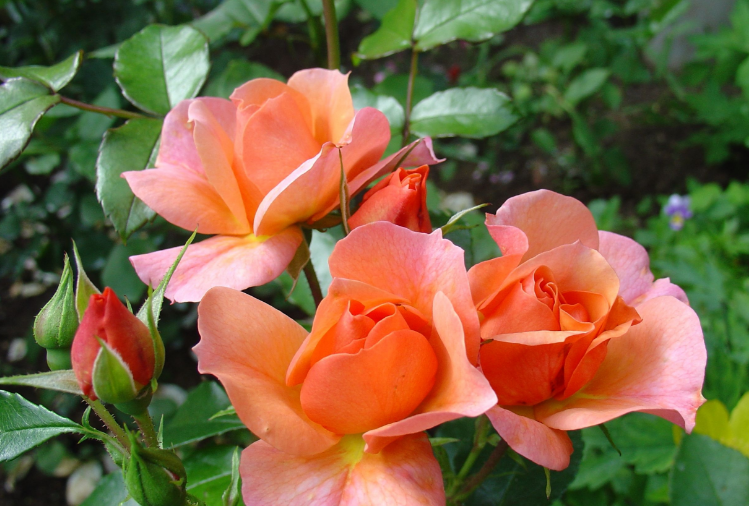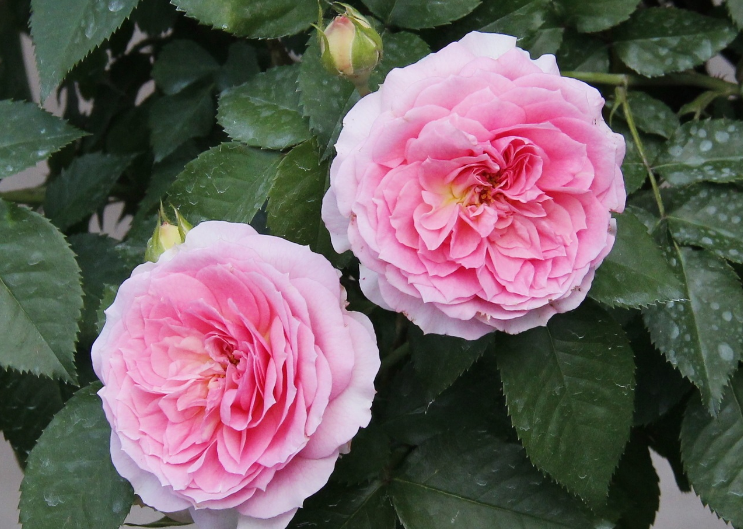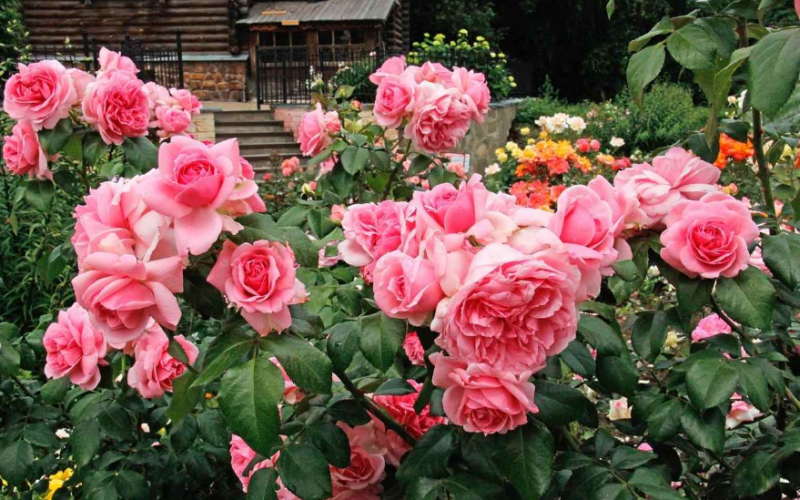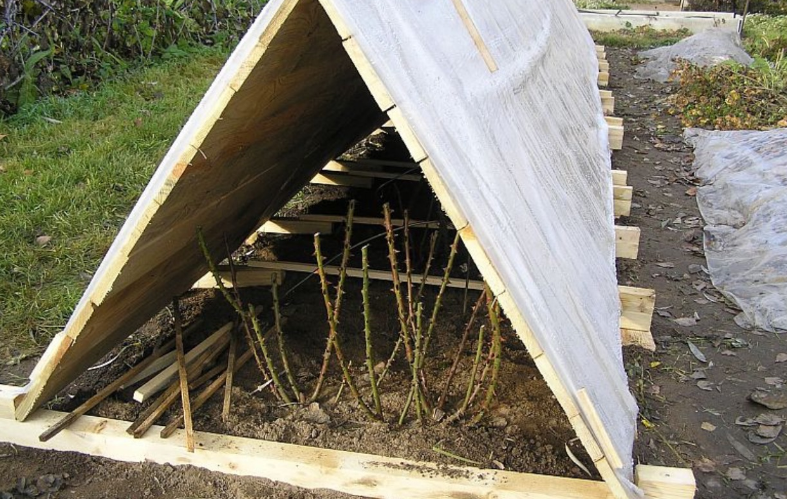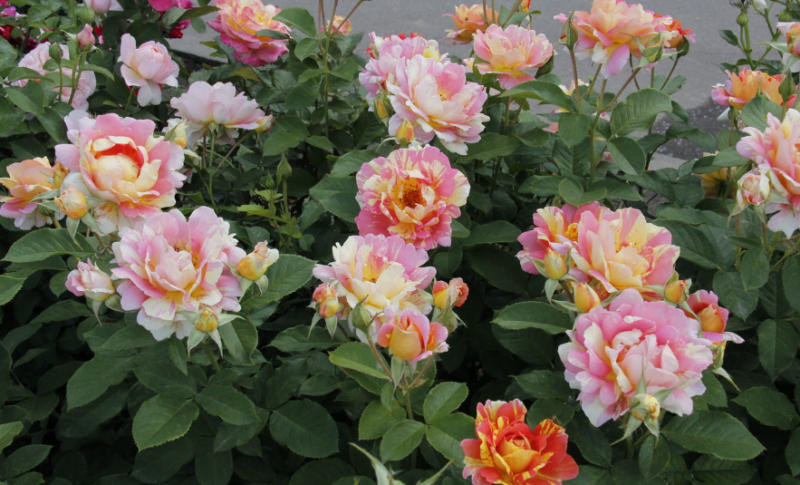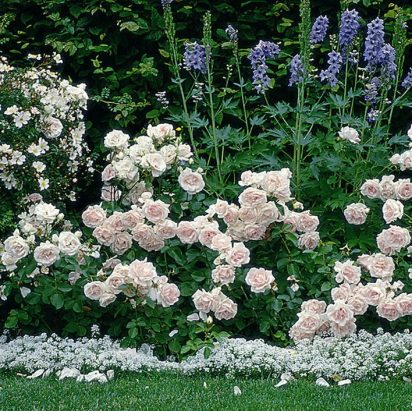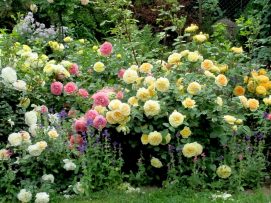A neat garden with lush flowering bushes always looks beautiful. To a flower bed for a long time pleased with bright colors, plant floribunda roses on it. How to care for a plant, and what is a floribunda rose, you will learn from our article.
Material Content:
Rose floribunda - what kind of flower
This plant is valued for long flowering and an abundance of buds, because of which it can be completely confused with a magical pink cloud. On each stalk there are three to five large flowers of a beautifully shaped glass or bowl. If we compare floribunda and tea-hybrid roses, the latter do not look so magnificent, since they have only one bud on each shoot.
Most often, floribunda is a compact bush that can be stunted or fairly tall (more than one meter).
For growing plants I use various methods. They look original in the form of borders along the edges of the track. Landscape designers often use them as part of a beautiful composition. But even if you plant only floribunda, your lawn will not be boring and dull.
Plants can be placed in containers and periodically rearranged, or planted on a stem and grown as a beautifully flowering tree.
Floribunda will always be the main "character" of the infield due to its lush beauty and long flowering.
Description and characterization of varieties
Today in shops and flower farms a large selection of varieties of the crop in question is presented.
Better varieties of roses floribunda for Moscow region:
- "Kimono". It is considered quite old, but still very popular.The explanation is very simple: the bush has an erect shape, it can reach a meter in height. There are always a lot of flowers on it, so he looks magnificent and rich. The diameter of each flower varies within 7 centimeters. In one inflorescence no less than five buds. Rose "Kimono" blooms for a long time and more than once. She is not afraid of most diseases and winter colds.
- "Nina Weibull." Also applies to old varieties. It is valued for its unpretentiousness, resistance to adverse conditions. Lush, vibrant flowers begin to bloom in late May and fade in late autumn. They have a dark red color, a diameter of at least five centimeters. One inflorescence includes from three to ten flowers. The buds do not lose their external attractiveness under the sun's rays and prolonged downpours. Bushes reach up to 70 cm in height. Bright flowers harmonize beautifully with dark green leaves. The variety is not afraid of frost and disease.
- "Rumba". The height and width of the bush does not exceed 50 cm. The flowering period is summer and mid-autumn. Flowers with a diameter of 6 cm have a yellow-red color. They smell easy and pleasant. In one brush there can be 3-5 buds. “Rumba” is less resistant to diseases and colds, but caring for it is quite simple.
- "Leonardo da Vinci." The most popular variety in our country. The buds are very large, about 10 cm in diameter. Goblet bright pink flowers smell very delicate and gentle. The variety "Leonardo da Vinci" reaches 100 cm in height, it is extremely rare to get sick and is not afraid of humidity.
Preparation and landing in the open ground
In order for the plant to please with its amazing flowering, several principles of proper planting and cultivation must be observed.
Soil preparation is an important step in planting any plant. You need to start the event 14 days before the day of disembarkation.
- The selected plot of land needs to be dug up and rid of all weeds. The thickness of the dug up ball of soil should be up to 50 cm.
- The soil needs to be fertilized with peat, humus and rotted manure. In heavy and clay need to add a little sand.
- Two weeks later, on the day of planting, in the prepared soil you need to dig a hole and cover it with a drainage layer. In the case of a close occurrence of groundwater or the location of the site in wetlands, it is better to make the drainage thick.
- In the prepared recess, place the seedling and carefully cover it with earth.
Roses are planted in spring or autumn. The choice is based on the climatic features of the region. In cold terrain, planting is best done in May days - this will allow the rose to take root and assimilate well.
In regions with a warm climate, it is more advisable to plant roses in the fall. They will take root before winter, and in spring they will spend all their energy on flowering.
How to care for flowers
Caring for floribunda roses involves regular watering and loosening. In the first year after spring planting, all buds need to be cut. This will help strengthen the root system of the plant and accelerate the formation of the bush. With the advent of autumn, several buds can be left on it.
Water the plant only with warm, settled water in the early morning or evening. In cloudy weather, you can water it during the day. It is better not to use cold water, so as not to cause stress in the rose.
Watering is carried out only under the root and so that the liquid does not fall on the leaves. After, you need to loosen the soil so that it becomes more breathable. Without observing this rule, it is unlikely to grow a beautiful healthy bush
Roses, like all living things, need macro- and microelements.
For each growing season, a particular type of fertilizer is relevant:
- Flowering will be lush and plentiful, if during it and before that, during the budding period, the plant will receive nitrogen fertilizers. It can be home-made or industrial products.
- In autumn, at the end of flowering, the rose needs phosphorus-potassium fertilizing. They will help her better survive the winter.
Culture necessarily requires pruning.The main procedure is best carried out in the spring, when the plant wakes up, and buds begin to appear. Branches need to be cut over the fifth kidney. If the manipulations are carried out to rejuvenate the bush - on top of the second.
In the summer, the bush should be regularly cleaned of old flowers and form a crown.
Old flowering must be removed necessarily, as it interferes with the formation of new buds.
Winter preparations
Varieties of floribunda roses have good frost resistance. Many of them are representatives of the sixth zone, but good shelter will never be superfluous. It can be made from spruce branches or special materials sold in gardening stores. Consult a consultant and he will tell you what material is best used in your climate zone.
Pruning roses in the fall is sanitary in nature and involves the removal of foliage, as well as extra processes before the cold.
Reproduction of floribunda roses
For reproduction, you can use:
- seeds;
- cuttings;
- digging up.
The first method is very conditional and practically not used in home gardening. The situation with cuttings is much simpler, because the cuttings have all the varietal characteristics of the mother plant.
Using cuttings is the most affordable and easiest method of propagating the floribunda rose.
- The handle should be taken from the middle of a large stem and cut at the edges at an angle of 45 °.
- Then transfer it to wet ground or a container of water in which a growth stimulator has been previously added.
- When the roots appear, transplant the stalk into the ground.
Dropping is the easiest breeding technique. Just bend the extreme stem to the soil and fill it with soil in one area. After a certain time, the plant will take root in the place of contact with the ground. After that, a new rose can be separated and planted separately.
Disease and Pest Prevention
These plants are famous for resistance to frost, especially if all the rules of care are followed. However, powdery mildew, black spotting or rust can sometimes affect a crop.
In an ill bush, immunity is greatly reduced and growth is slowed down. This can be avoided through prevention.
Be sure to treat the bushes with fungicides before the start of winter.
Use in landscape design
Any landscape design can be decorated with floribunda roses. They look equally profitable in strict English, variegated Moorish and exotic colonial style. Lushly flowering neat bushes can be combined with sculptures of romantic Provence or ethnic French style.


